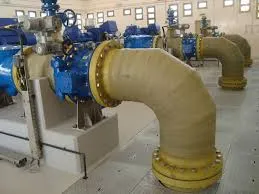
-
 Afrikaans
Afrikaans -
 Albanian
Albanian -
 Amharic
Amharic -
 Arabic
Arabic -
 Armenian
Armenian -
 Azerbaijani
Azerbaijani -
 Basque
Basque -
 Belarusian
Belarusian -
 Bengali
Bengali -
 Bosnian
Bosnian -
 Bulgarian
Bulgarian -
 Catalan
Catalan -
 Cebuano
Cebuano -
 China
China -
 China (Taiwan)
China (Taiwan) -
 Corsican
Corsican -
 Croatian
Croatian -
 Czech
Czech -
 Danish
Danish -
 Dutch
Dutch -
 English
English -
 Esperanto
Esperanto -
 Estonian
Estonian -
 Finnish
Finnish -
 French
French -
 Frisian
Frisian -
 Galician
Galician -
 Georgian
Georgian -
 German
German -
 Greek
Greek -
 Gujarati
Gujarati -
 Haitian Creole
Haitian Creole -
 hausa
hausa -
 hawaiian
hawaiian -
 Hebrew
Hebrew -
 Hindi
Hindi -
 Miao
Miao -
 Hungarian
Hungarian -
 Icelandic
Icelandic -
 igbo
igbo -
 Indonesian
Indonesian -
 irish
irish -
 Italian
Italian -
 Japanese
Japanese -
 Javanese
Javanese -
 Kannada
Kannada -
 kazakh
kazakh -
 Khmer
Khmer -
 Rwandese
Rwandese -
 Korean
Korean -
 Kurdish
Kurdish -
 Kyrgyz
Kyrgyz -
 Lao
Lao -
 Latin
Latin -
 Latvian
Latvian -
 Lithuanian
Lithuanian -
 Luxembourgish
Luxembourgish -
 Macedonian
Macedonian -
 Malgashi
Malgashi -
 Malay
Malay -
 Malayalam
Malayalam -
 Maltese
Maltese -
 Maori
Maori -
 Marathi
Marathi -
 Mongolian
Mongolian -
 Myanmar
Myanmar -
 Nepali
Nepali -
 Norwegian
Norwegian -
 Norwegian
Norwegian -
 Occitan
Occitan -
 Pashto
Pashto -
 Persian
Persian -
 Polish
Polish -
 Portuguese
Portuguese -
 Punjabi
Punjabi -
 Romanian
Romanian -
 Russian
Russian -
 Samoan
Samoan -
 Scottish Gaelic
Scottish Gaelic -
 Serbian
Serbian -
 Sesotho
Sesotho -
 Shona
Shona -
 Sindhi
Sindhi -
 Sinhala
Sinhala -
 Slovak
Slovak -
 Slovenian
Slovenian -
 Somali
Somali -
 Spanish
Spanish -
 Sundanese
Sundanese -
 Swahili
Swahili -
 Swedish
Swedish -
 Tagalog
Tagalog -
 Tajik
Tajik -
 Tamil
Tamil -
 Tatar
Tatar -
 Telugu
Telugu -
 Thai
Thai -
 Turkish
Turkish -
 Turkmen
Turkmen -
 Ukrainian
Ukrainian -
 Urdu
Urdu -
 Uighur
Uighur -
 Uzbek
Uzbek -
 Vietnamese
Vietnamese -
 Welsh
Welsh -
 Bantu
Bantu -
 Yiddish
Yiddish -
 Yoruba
Yoruba -
 Zulu
Zulu
frp food grade equipment
Understanding FRP Food Grade Equipment Benefits and Applications
In the food industry, maintaining hygiene and safety standards is of utmost importance. As such, the materials used for equipment must adhere to stringent regulations to ensure they are suitable for food contact. One of the notable materials that have gained popularity in this sector is Fiber Reinforced Plastic (FRP). This article explores the characteristics, benefits, and applications of FRP food grade equipment, highlighting its significance in modern food processing.
What is FRP?
Fiber Reinforced Plastic, commonly referred to as FRP, is a composite material composed of a polymer matrix reinforced with fibers. The fibers can be made from various materials, including glass, carbon, or aramid, which confer superior mechanical strength to the composite. The polymer matrix provides resistance to moisture, chemicals, and heat, making FRP an excellent choice for environments where traditional materials may falter.
Benefits of FRP Food Grade Equipment
1. Hygiene and Safety One of the primary advantages of FRP food grade equipment is its exceptional hygiene properties. FRP is non-porous, which prevents bacteria and other pathogens from being absorbed into the material. This characteristic makes it easier to clean and sanitize, which is crucial for compliance with food safety regulations.
2. Chemical Resistance Food processing often involves the use of various chemicals and cleaning agents. FRP exhibits remarkable resistance to a wide range of acids, alkalis, and solvents. This durability allows FRP equipment to withstand the harsh conditions commonly found in food processing environments without degrading, thereby prolonging the lifespan of the equipment.
3. Lightweight and Versatile Compared to traditional materials like stainless steel, FRP is significantly lighter. This attribute allows for easier handling, installation, and maintenance. Additionally, FRP can be molded into a variety of shapes and sizes, making it suitable for customized applications in the food industry.
4. Cost-Effectiveness While the initial investment in FRP food grade equipment may be higher than that of conventional materials, the long-term savings due to reduced maintenance needs and longer service life can make it a cost-effective choice. Furthermore, the energy efficiency of FRP can reduce operational costs over time.
frp food grade equipment

5. Thermal Insulation FRP offers excellent thermal insulating properties, which can be beneficial in processes that require temperature control. This characteristic helps maintain temperature-sensitive food products, ensuring their quality and safety during processing and storage.
Applications of FRP Food Grade Equipment
The versatility of FRP allows it to be used in various applications throughout the food industry, including
- Storage Tanks FRP tanks are commonly used to store liquids, such as oils, sauces, or beverages. Their resistance to corrosion and ability to withstand different chemical formulations make them ideal for this purpose.
- Conveyors and Chutes FRP components can be fabricated to create conveyors or chutes that transport food products within processing plants. The lightweight nature of FRP makes it easier to design systems that can be adjusted or modified as needed.
- Processing Equipment FRP is used in the manufacturing of processing equipment such as mixers, blenders, and hoppers. The material’s resistance to contamination and ease of cleaning makes it suitable for these applications.
- Workstations and Countertops Many food processing facilities employ FRP for countertops and workstations, leveraging its durability and hygienic properties. These surfaces provide a safe and easy-to-clean environment for food preparation.
Conclusion
FRP food grade equipment represents a significant evolution in materials used within the food industry. Its advantages in hygiene, chemical resistance, cost-effectiveness, and versatility make it an ideal choice for various applications. As the food industry continues to prioritize safety and efficiency, FRP will likely become an increasingly common material in food processing facilities. Embracing this innovative technology can lead to better compliance with food safety standards while enhancing overall operational efficiency.









